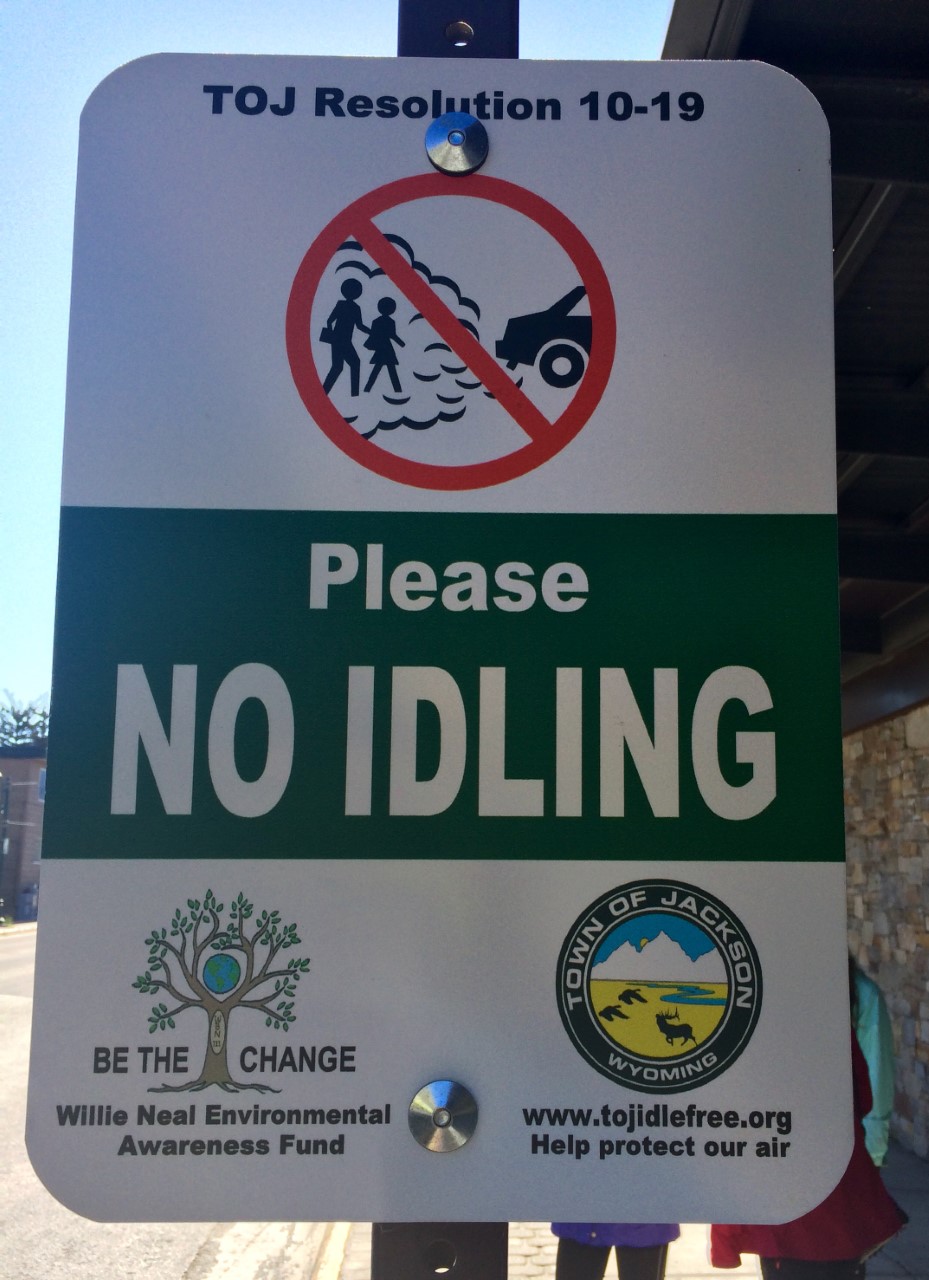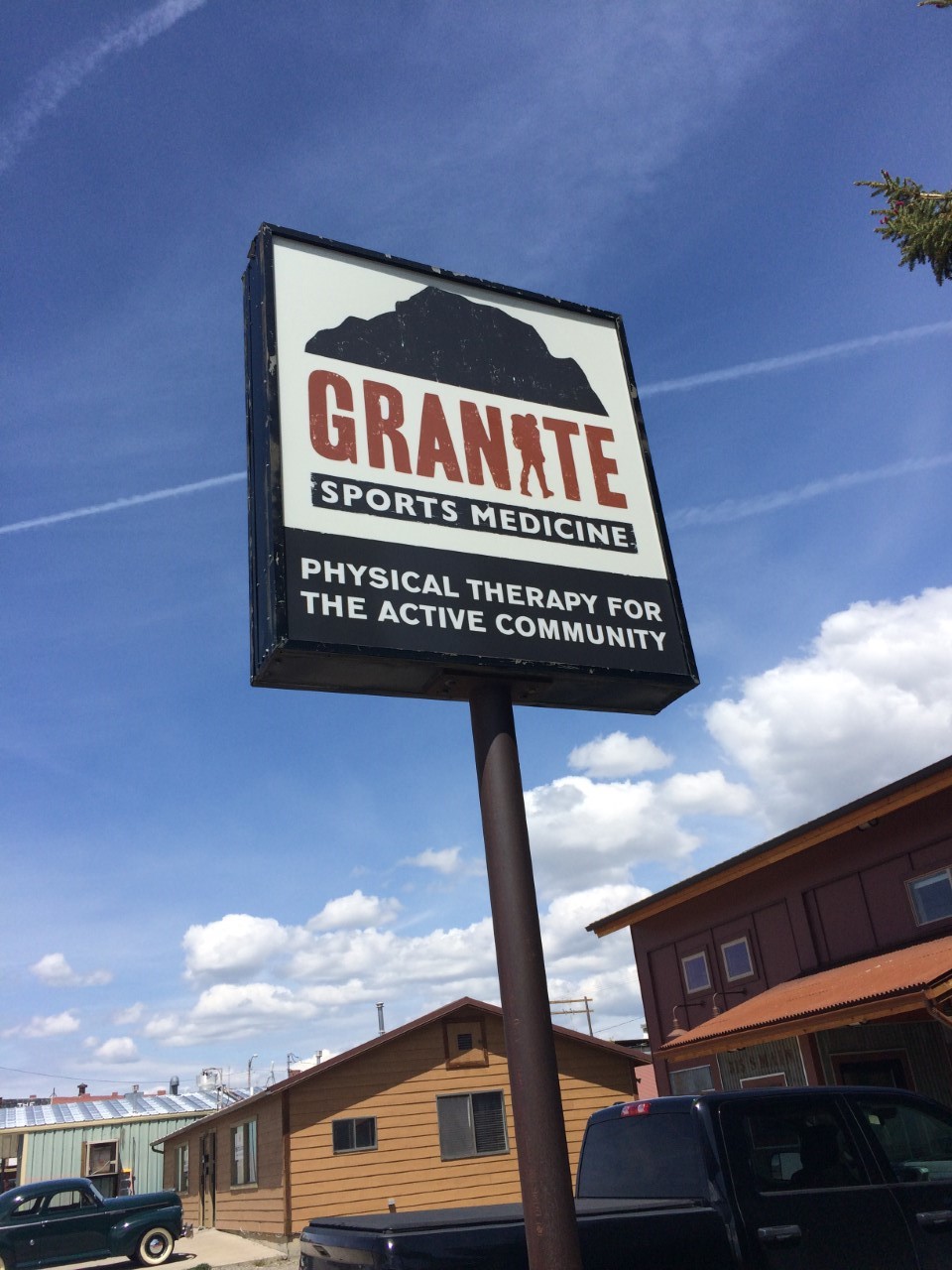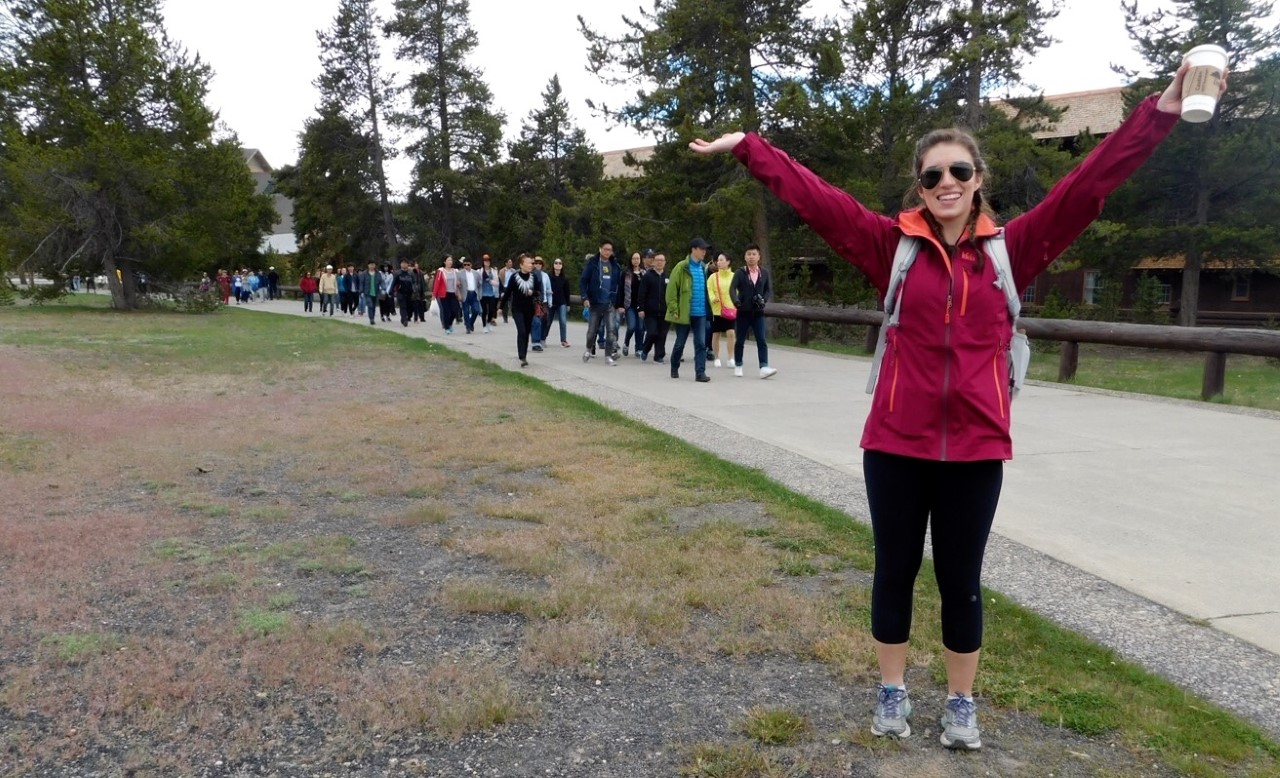


May 26th, 2016 § Comments Off on Photograph Collection § permalink



May 26th, 2016 § Comments Off on Public Documents § permalink
This shirt was found at the first visitors center we went to. The image on this shirt is done for two reason. First, to rally support behind the park. At every visitor center we went to observe there was the option to donate. You could not make a purchase without being asked to round up to the next dollar to help Yellowstone. Second, to get you to purchase the shirt. “America’s Best Idea” causes one to think that all of America agrees with this statement. Any America theme sells quickly anyways due to national pride. If you look closely you can see people climbing over the words. They appear to be hiking and exploring, but also look like soldiers. Many people rally behind that, so the designers of this wanted to rally support for the park as well.
Obviously, the main message behind this flyer is safety. We picked this up in Gardiner in the newspaper. After our explorations through-out Jackson Hole, Gardiner, and Livingston there was one theme that was in common, tourist. We determined that the need for flyers like these have risen as the number of people who visit the park increases. We even witnessed the madness ourselves when driving from Jackson Hole to Gardiner. There was a traffic jam and crowds of people right next to a momma bear and her two cubs. This flyer is to reiterate the fact that this is not a zoo and the animals are in their natural habitat, so people need to be more aware.
Similar to the photo above, this sign is about safety. More specifically this sign is relating to environmental safety. While driving around the GYE we were stopped or slowed multiple times due to idling. We knew this was dangerous because of car accidents, but we never considered the fact that it was bad for our environment until we noticed this sign. That must be the case for most people. They are just generally uneducated about the world around them sometimes they do not stop to think how their actions could effect someone besides themselves. Putting the bison in the exhaust is a great idea because generally when people think of Yellowstone they think of a bison.
May 24th, 2016 § 1 comment § permalink
We believe this photograph titled “East Meets West”, shows how much trout mean to the area around Yellowstone. The photo shows a grizzly bear and panda bear meeting, but in the background is a huge image of a trout, representing the meaningfulness of trout. We think this shows that no matter what else is going on with other animals, the trout is very important.
This picture titled, “The Gift”, clearly shows the trout as being special or a gift to Yellowstone. The native cutthroat has declined in numbers since the introduction of lake trout. This could depict how people think of the cutthroat as a gift and would like to see its’ numbers increase in size.
This art work titled, “Balancing Fin and Yang”, in our opinion is a representation of the essential balance between lake trout, cutthroat trout and fisherman. Trout are obviously important to the ecosystem here and need to remain in balance. Currently the lake trout are hurting the native cutthroat trout, so changes must be made to balance these types of fish.
This picture titled, “Fishing the Yellowstone”, shows a small human trying to pierce a trout. The trout is much bigger in size though. We believe this shows how the lake trout has reeled in fishermen to want to fish for it instead of the native cutthroat trout. Fishermen say the lake trout are much more of a thrill to fish.
This painting titled, “Trout Hell”, symbolizes the internal sense of trout fishing pressure. It shows how the trout around Yellowstone are being fished at scary levels, and that the native Cutthroat are in trouble.
#CutOutLakeTrout
May 24th, 2016 § Comments Off on Getting to know Pack 5 § permalink
Athamandia Bond
Hi, my name is Athamandia Bond. I am 21 and from Virginia Beach, where I lived in the same house my entire life. I am a biology major and hope to attend optometry school after Longwood. I have always enjoyed nature and just being outside, so that is the main reason I signed up for the Yellowstone trip. The other reason being that I don’t have to take english 400 in a classroom, since english isn’t really my thing.
After experiencing this trip I am truly grateful. I really feel like it was a once in a lifetime experience and I enjoyed every minute of it. I thought getting up at 4:15 am to go wildlife watching would be miserable but the things we were able to see made it so worth it. Seeing all the wildlife in the GYE that I normally wouldn’t see was one of my favorite things. The wolves, bears, and baby owls were breathtaking, along with all of the other wildlife. I also never got tired of seeing bison, especially when they were in arms reach from the car window. The landscape was stunning as well and I often wondered how certain structures formed. Fortunately, I had Matt with me to explain how these things, like geysers, were formed. The trip also allowed me to interact with many people I would never have if not for this class. I really enjoyed this, since I am usually quite shy and introverted. All in all, this trip out west was a great experience that allowed me to gain a lot of knowledge and I will always remember it.
Matt Perry
Hello, my name is Matthew Perry from Williamsburg Va. I grew up spending a lot of my time as a young kid outside. This was one of the reasons that I was pushed towards majoring as an Integrated Environmental student. My intention is to find a job that contains my passion for the outdoors and nature. As soon as I heard of this class I knew it would be an amazing opportunity for me. It would give me the opportunity to spend some time in the outdoors and even put some of the information that I had been learning to the test. It would also satisfy the english 400 goal, which isn’t one of my passions or strengths.
This trip was more meaningful than I had ever expected it would be. I figured I would just use this as a way to escape from Virginia, and have a special vacation. On the contrary, I learned more in this english class than I ever would have in the normal english 400 class. I was able to obtain an overall broader perspective and knowledge of the Greater Yellowstone Ecosystem and how each specific issue became an issue and what humans are doing to try and fix them. One of my most special memories that will stay with me forever was waking up at 5 am to go wildlife watching. For the first time in my life I got to watch adult and baby wolves interact in their own homes, instead of through a tv screen. Being able to go ziplining for the first time in my life also was a huge plus. I’m only mildly afraid of heights so this activity was slightly pushing my comfort zone. Overall this trip was worth every cent and bit of effort, and I would recommend it to all students throughout every major.
Kerby Dalton
Hey! My name is Kerby Dalton and I am from Mechanicsville, Virginia. I am currently a senior at Longwood University. I study social work. This trip was out of my comfort zone. I signed up for Yellowstone mainly because the pictures looked beautiful and I had never been before. At first, I did not think I was going to be able to keep up with all the biology facts. Luckily, so many people there had so much knowledge they were able to explain it all to me in a way that got me excited. I never have been much of an investigator. I enjoy the outdoors, but never really have that urge to explore. Through-out the week I found myself exploring more and more and asking more and more questions. I am so glad I stepped out of my comfort zone and went on this trip. Also, I was able to pick up on issues others didn’t see from my social work perspective. I would love to come back out to Yellowstone and become an advocate for the animals or even the people who their who deserve it. In general, this trip gave me a greater appreciate for the natural world around me.
May 21st, 2016 § 4 comments § permalink
Our pack explored the town of Livingston on Monday May 16th from12:30-2pm. When we first started out we began by walking from a neighborhood to the main part of town. This town is surrounded by the beautiful mountains.
The houses we saw were your basic small town homes, small with a unique build for each house. There was not much of a run down part of town, which makes sense with the median house values being $164,500. One interesting thing we did notice was that instead of a rain gutter running all the way down from the gutter to the ground they had chains or little buckets of some sort.
We also spent time in a park. It was well maintained and had a swing set and play area. While walking through town we noticed a lot of antique, thrift stores, and art museums. We spoke to several friendly business owners. One commented on how she loves this town because of their sense of community even with being a tourist town as well. According to the U.S. Census, Livingston is 96% white, which was apparent while roaming around the town. Many of the businesses in Livingston uses the mountains in their logos. In our observations, Livingston is a tourist town with a small town vibe as well. Meaning Livingston does rely on tourism, but that is not the whole purpose of the town. In general, Livingston seemed to be a genuine community.
May 17th, 2016 § 1 comment § permalink
May 16, 2016
4:30pm
Location: Jackson, WY North Jackson Street to Cache Street
Jackson Hole is a flat town surrounded by mountains. We explored the section behind downtown. There were a lot of hotels in this section of town. We did notice a few smaller houses in this area. They did not compare to the hotels that we noticed. There were a couple of restaurants in this area, locally owned businesses, and smaller shops. A small park was located behind one of the hotels we saw. Walking around was difficult at times due to the lack of sidewalks behind the main part of town. Jackson Hole, WY holds 9,577 people. Housing here is expensive, typically houses range from $50,000 to over $1 million dollars with the average income being $64,345. Also, when we were walking through talk we noticed bunch of help wanted signs in multiple store windows. When talking to the people of Jackson a common theme that arose was the housing issues. One man informed us how only 3% of the land is build-able, yet so many people want to live here. This town is generally filled with tourist. It’s a tourist town. This is obvious through all the hotels that we saw in our part of town. Most of the businesses we saw were geared toured the tourist population. Another person that we spoke to had an assumption about the town. He commented on the fact that this town is pro-environment. We determined that this could be an indication of the town being left-sided. In general, the people of Jackson were welcoming to the tourist community, but had serious concerns regarding property values and development.
May 13th, 2016 § Comments Off on How does the economy influence behavior adaptation and disease fluctuation within the Yellowstone herds? § permalink
Elk are one of the many types of wildlife in the greater Yellowstone area. Tourists come from all over to observe and learn about the wildlife. It has been accounted that 93% of tourists come to see the wildlife. The elk population is one of the most plentiful and is seen most often making the Elk one of the most economic incomes. Elk viewing and hunting has become a huge part of the economy for the greater Yellowstone area, but when cattle and elks cross paths, the elks are displaced and cannot thrive, therefore affecting the economy.
States that have an over abundance of Elk allow for the removal of a predetermined amount of Elk per season. Hunters and Hunting outfitters are in a position to obtain significant economic gain each season. Hunters and outfitters provide economic input into the economic system that surrounds the Yellowstone National Park. Money that is spent on hunting of Elk involves tag prices, gear prices, and other miscellaneous rental, room and board, and various other fees. Gardiner, Montana thrives on the economic fluxes associated with Elk hunting and Outfitting. But as the harvesting of mature buck trophy elks are declining so is the economic input into economies such as those in Gardiner and surrounding towns suffer.
Elk behavior has had to go through several changes over the past few years with the integration of wolves and hunters. Their travel patterns have changed quite a bit because of this. Blacktail is a good area for elk to gather but also has plenty of hunters so elk will not go in that area because of it. Madison valley provides a safe passage for elk so it is more likely that they would go this way. Their Northern route is riddled with wolves so that would be the area where the elk population becomes thinned out.
Brucellosis is a contagious bacterial disease that originated in livestock. Both Elk and Bison have been exposed to the disease in the greater Yellowstone ecosystem. The prevalence of the disease in Elk should be fairly low, but with the presence of about twenty-two feedgrounds in Wyoming, the high density of Elk have been known to carry high densities of the disease. The transmission of the disease from feedground Elk is known to be the cause of recent infections of Wyoming cattle.
To get involved with this discussion, you can comment below on posts or post your own response on your personal social media account. Just make sure to include the #ElkLivesMatter in your social media post!
Additional Scources
May 12th, 2016 § 2 comments § permalink
For the benefit and enjoyment of the people; who are the people benefiting and enjoying Yellowstone National Park?
Demographics of the United States:

With 323,543,308 people in the United States as of May 2016, why did only 4,095,317 people visit the park in 2015? Is it a question of money, time, physical inability, health issues, weather, distance, or do people just not want to visit America’s First National Park? With an entrance fee anywhere from fifteen to thirty dollars, it’s not an entrance fee that will break the bank for people in surrounding states that are only a short drive away. But still, people in surrounding states such as Montana, Utah, Idaho, South Dakota, and Nebraska have never traveled into the boundaries of Yellowstone. California being the leading state population of 40 million people in The United States and only two states away from Wyoming, you’d think there would be more visitors to the park each year. The typical U.S. worker at a private company gets 10 days of paid vacation and six paid holidays per year, why isn’t the typical U.S. worker using those days to go to Yellowstone? Who is the typical American?
Obstacles are one of the main factors that play into individuals visiting Yellowstone National Park. Accessibility to the park isn’t always ideal either. Many individuals are effected by issues such as limited wheelchair access areas, impaired hearing and vision, overall health issues, and much more. As described by the National Park Services, “Extra obstacles will be encountered because of the remote, wilderness nature of this special place”. In addition to physical barriers that could prevent individuals from visiting the park, money and phobias can factor in as an obstacle as well. The fee to enter the park is varied by vehicle and the amount of people per vehicle. If you are a private, non- commercial vehicle it’s 30 dollars, motorcycle or snowmobile is 25 dollars, individuals by foot, or bicycle is 15 dollars per person under 16 and 20 dollars per person older than 16. The entrance fee is for a seven – day pass. For commercial tour buses, 1-6 seats are 25 dollars with an additional 15 dollars per person. A van with 7-15 seats is 125 dollars, a mini bus with 16-25 seats is 200 dollars, and a motor coach with 26 or more seats is 300 dollars. With the National Park being 3,472 square miles, someone with a walking disability is going to have a much harder time getting around the park. Having a phobia could also prevent an individual from coming to the park whether their phobia is the fear of flying from state to state, driving across the country, being at extreme heights and altitudes, or just an overall increased anxiety from a lack of safety in a different environment. Regardless of whether it’s a physical, materialistic, or emotional obstacle there are multiple obstacles that can prevent someone from experiencing the beauty and adventure that Yellowstone National Park has to hold.
http://www.yellowstone.co/stats.htm
https://www.census.gov/quickfacts/dashboard/PST045215/00
https://www.nps.gov/yell/planyourvisit/accessibility.htm
https://www.nps.gov/yell/planyourvisit/parkfacts.htm
https://www.nps.gov/yell/planyourvisit/fees.htm
May 10th, 2016 § Comments Off on Test Post § permalink
We’re excited about Yellowstone 2016!